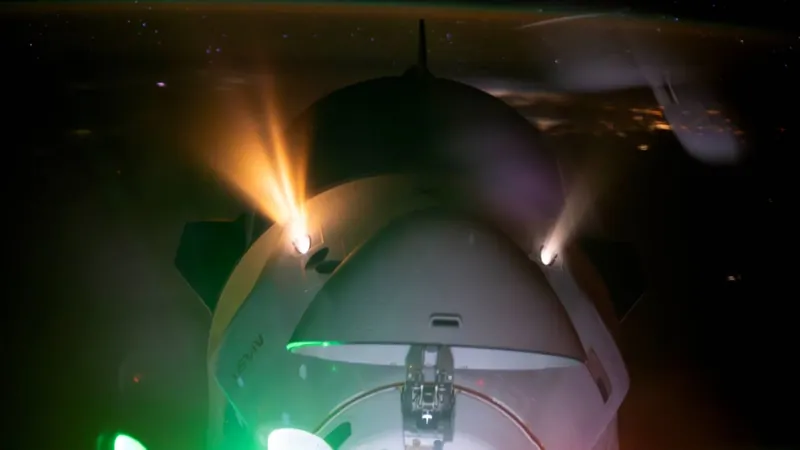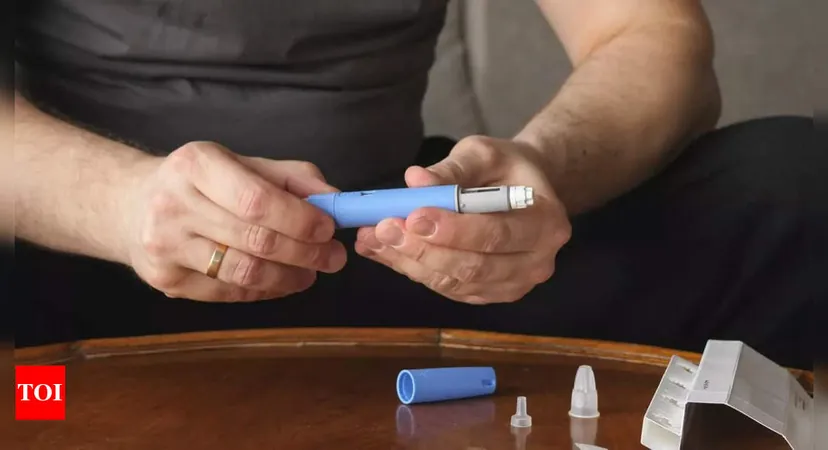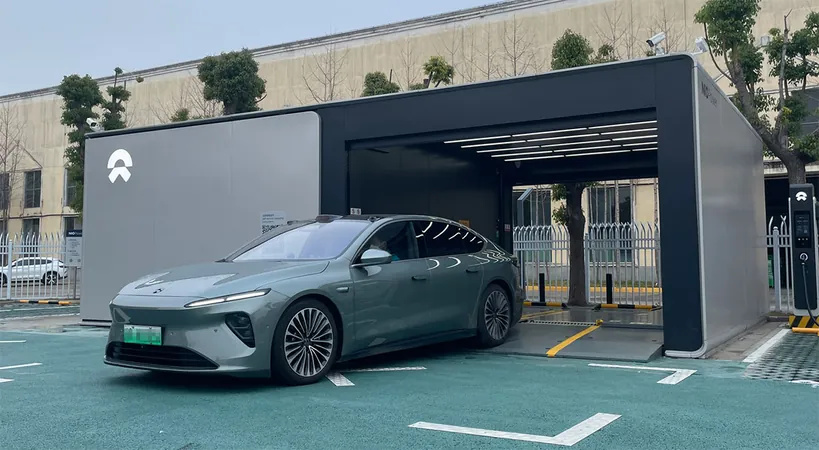
SpaceX Makes History by Boosting ISS Orbit with Dragon: A New Era Begins!
2024-11-08
Author: Daniel
A Groundbreaking Achievement
In a groundbreaking achievement, SpaceX's Dragon spacecraft produced a significant orbit-raising boost for the International Space Station (ISS) for the very first time. On November 4, during SpaceX's 31st commercial resupply mission, the cargo vehicle was launched to rendezvous with the ISS, successfully docking the following day.
Historic Milestone in Space Logistics
As of November 8, the Dragon executed an orbital reboost maneuver, elevating the ISS to stabilize its low-Earth orbit. This maneuver is not just a routine task; it’s a historic milestone that symbolizes a new chapter in space logistics. Traditionally, such adjustments have been handled by Russian vehicles like Soyuz and Progress spacecraft, but with this latest operation, Dragon has shown it can take on this critical responsibility.
Importance of Sustaining the ISS's Orbit
The ISS has been continuously inhabited and operational for nearly 25 years, and sustaining its orbit is crucial to avoid unintentional re-entry into Earth's atmosphere. The recent boost involved firing Dragon's thrusters at approximately 12:50 p.m. ET, conducting a burn lasting around 12.5 minutes to successfully elevate the station's trajectory.
NASA's Celebration and Future Implications
NASA celebrated this achievement via social media, noting that the demonstration highlights the Dragon’s reboost capabilities. Although NASA had previously tested an orbit reboost with Northrop Grumman's Cygnus vehicle in 2022, Dragon's maneuver provides essential data for future operations, particularly as plans for the ISS's eventual decommissioning loom closer, projected for sometime after 2030.
Data Collection for Future Operations
The data collected will be critical for NASA’s strategy to design a deorbit vehicle that SpaceX will develop to ensure the ISS safely descends into the Pacific Ocean upon its retirement. Furthermore, this strategic move sets the stage for NASA to redirect its budget towards ambitious projects like the Artemis Program, which aims to return humans to the Moon by 2024 and lay the groundwork for Mars exploration.
Independence from Russian Spacecraft
SpaceX's director of flight reliability, Jared Metter, recently expressed confidence in the operations, labeling the maneuver as “a good demonstration” of Dragon's evolving capabilities. As the fallout from heightened geopolitical tensions between the U.S. and Russia continues, this success loosens the U.S. reliance on Russian vehicles for space operations, demonstrating a growing independence in space commerce.
Looking Towards the Future of Space Exploration
With Dragon's successful boost, NASA can now further invest in commercial space endeavors that promise to continue research in low-Earth orbit, paving the way for a new era in space exploration that might see the partnership with Russia evolve or become obsolete.
Nurturing the Next Generation of Space Stations
In the years leading up to the ISS's retirement, the focus will shift to nurturing the next generation of commercial space stations that could support ongoing missions and research. With such strategic advancements, the future of space exploration is looking more promising than ever. Stay tuned for what else SpaceX and other space agencies will unveil next!






 Brasil (PT)
Brasil (PT)
 Canada (EN)
Canada (EN)
 Chile (ES)
Chile (ES)
 España (ES)
España (ES)
 France (FR)
France (FR)
 Hong Kong (EN)
Hong Kong (EN)
 Italia (IT)
Italia (IT)
 日本 (JA)
日本 (JA)
 Magyarország (HU)
Magyarország (HU)
 Norge (NO)
Norge (NO)
 Polska (PL)
Polska (PL)
 Schweiz (DE)
Schweiz (DE)
 Singapore (EN)
Singapore (EN)
 Sverige (SV)
Sverige (SV)
 Suomi (FI)
Suomi (FI)
 Türkiye (TR)
Türkiye (TR)